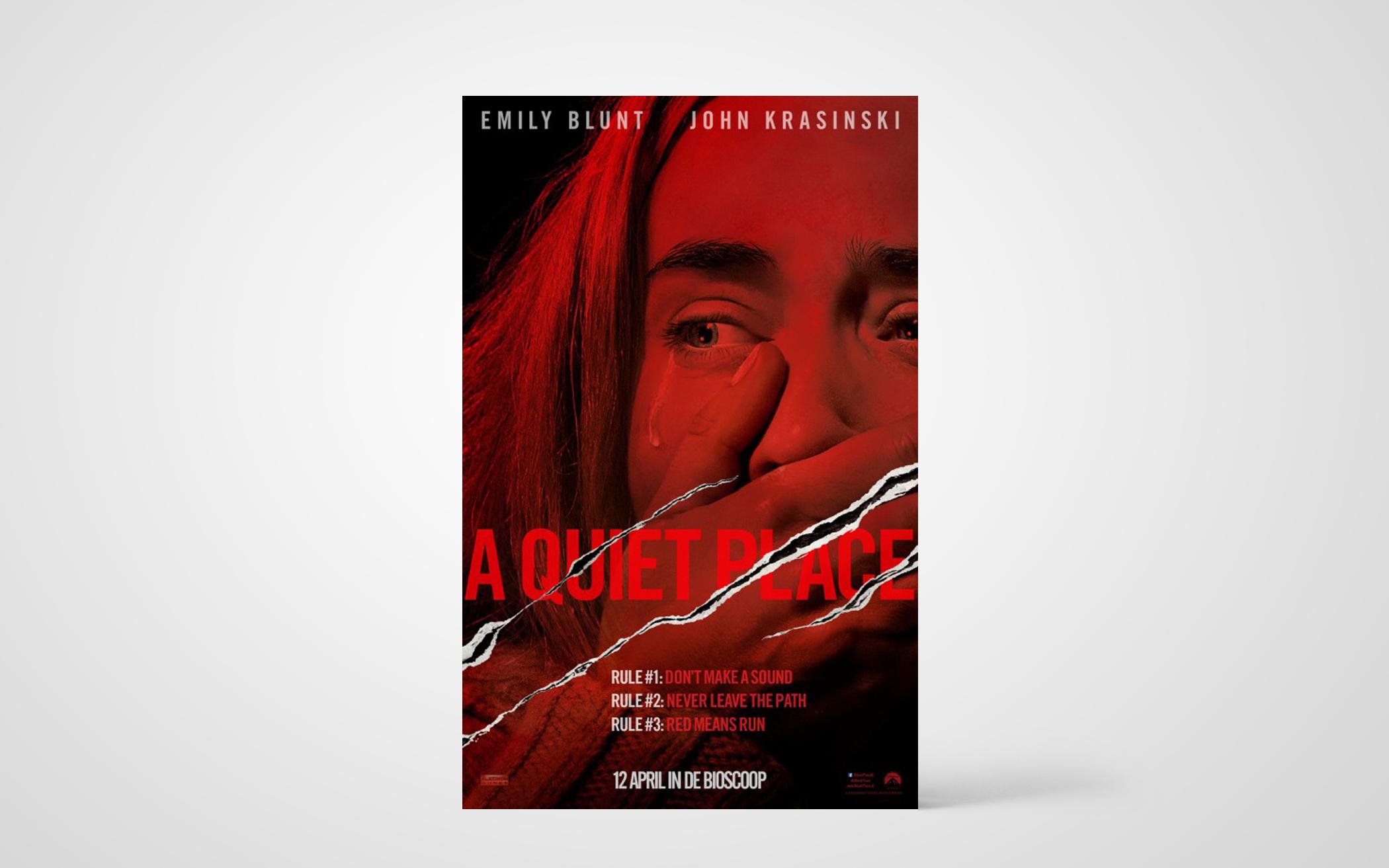It is the near future, and the apocalypse has happened. Roads are empty but for weeds; towns are quiet; and the few people alive are even quieter. The world has been overrun by alien creatures that hunt with their extraordinary hearing ability. The only way to survive is to remain completely silent.
When the film opens, the Abbott family is on a supply run, looking through a pharmacy for medicine to help their sick child. They walk barefoot to maintain the silence, and they use sign language to communicate. Since their daughter Regan is deaf, this is a familiar tool for them.
A Quiet Place is considered both a drama and a horror movie, the latter being a genre I rarely venture into. While there are a couple of jump scares, this is more of a suspense film with a few scenes that are scary and bloody enough to earn the PG-13 rating (don’t take the kids). It doesn’t go overboard with the gore. The real fear is in the suspense, knowing that at any moment they could accidentally tip off the enemy with the slightest wrong move.
Beyond the suspense, though, is a movie about family. Lee (John Krasinski) and Evelyn Abbott (Emily Blunt) are trying to maintain a nurturing family life in spite of the absolute silence. They struggle with the choices every parent has to make between the desire to protect their children and the need to give them the skills to survive on their own if and when it becomes necessary; in their case they struggle with those choices at a much more primal level. When Evelyn (Emily Blunt) becomes pregnant, any woman who has been pregnant when the future seems particularly bleak will know the fear that can take over at the thought of bringing a child into such a world.
Director, screenplay co-writer, and real-life husband to his co-star, John Krasinski has said that he made this movie as a love letter to his children. It’s easy to see as these parents demonstrate the love and self-sacrifice that keeps their family going.
But it’s also a love letter to the world. In these anxious times, while we are bombarded with not just bad news, war, and rumors of war, A Quiet Place gives viewers images of natural places—roaring rivers, golden fields, whispering trees. Even while the monsters roam the land, the land is full of beauty.
Much of the movie is silent (pro tip: eat your popcorn before it starts). When music is introduced into one scene, it is haunting and lovely, and a moment by the river allows a new chance to communicate. Those moments emphasize the richness of our senses, and the way that God designed us to receive love and the splendor of creation in so many ways.
The family tries to insulate itself from destruction, even building a soundproof room, insulated by layers and layers of newspapers full of terrible headlines. But isolation cannot keep the monsters away. Hope comes in the form of human weakness transformed into strength.
In the middle of an April of continuing cultural anxiety and, for many of us, the greyest and coldest of springs, A Quiet Place is a riveting ode to life and love. (Paramount)
About the Author
Kristy Quist is Tuned In editor for The Banner and a member of Neland Ave. CRC in Grand Rapids, Mich.

